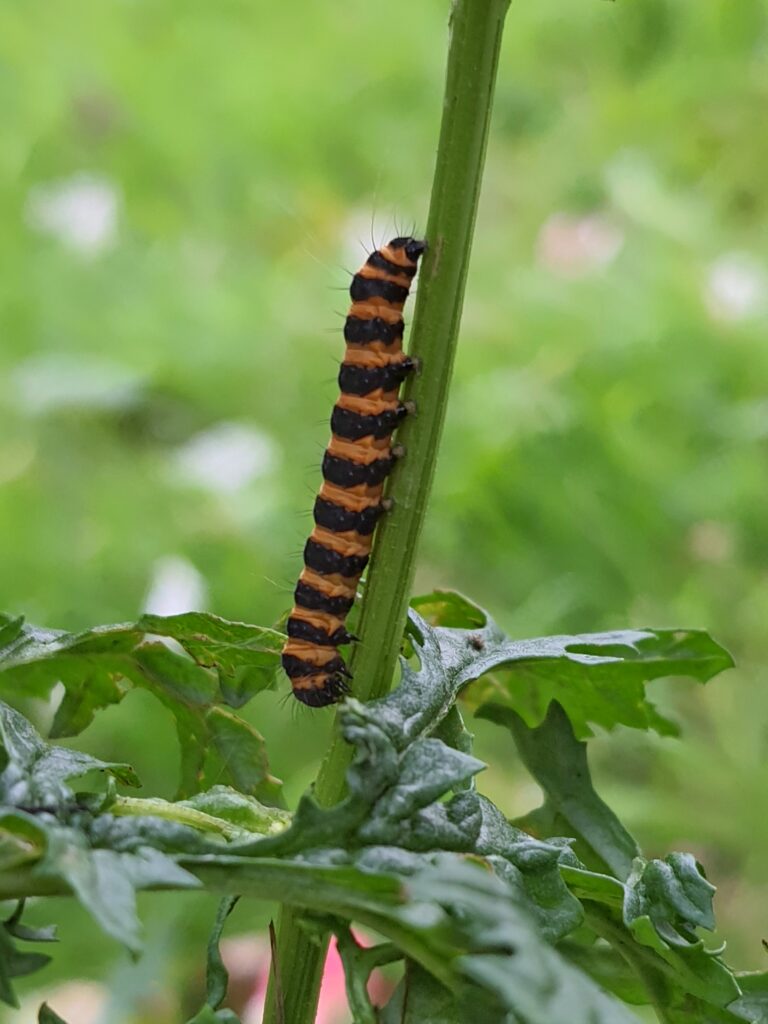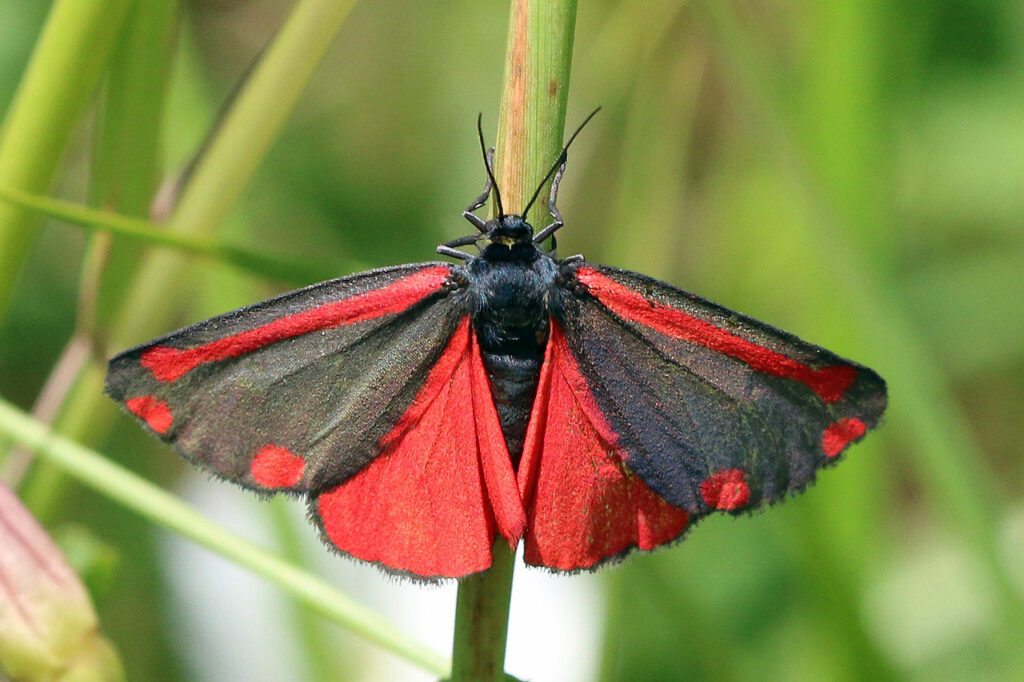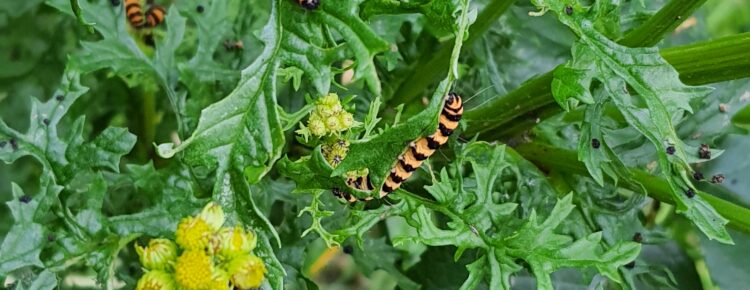Growing among the roses in the churchyard just now is a ragwort, the yellow wild flower famous for being poisonous to horses. It is also known for being attractive to the caterpillars of the Cinnabar moth and our example is covered in them.
These striking yellow and black creatures adore ragwort and provide a useful service in keeping the weed at bay. They can strip the plant bare. When fully grown the caterpillars leave the ragwort and pupate just beneath the surface of the soil. They then overwinter as a pupa.

They turn into one of the most distinctive of red moths, the Cinnabar moth, named after mercury ore, which is bright red. The moth flies mainly at night but you can sometimes see one on a summer’s day if you disturb it.
The Cinnabar moth is a relatively common species in southern and central parts of the British Isles but is scarcer further north and into Scotland, so it is good to see it in St. Oswald’s churchyard.

However, there has been a decline in Cinnabar numbers owing to attempts to eradicate ragwort.
Recent reports suggest that ragwort, while still growing and green, is unlikely to be eaten by livestock such as horses. However, when dry and mixed with hay this may not be the case. If eaten in sufficient quantity it can be fatal. However, ragwort in a garden or churchyard is no threat.

